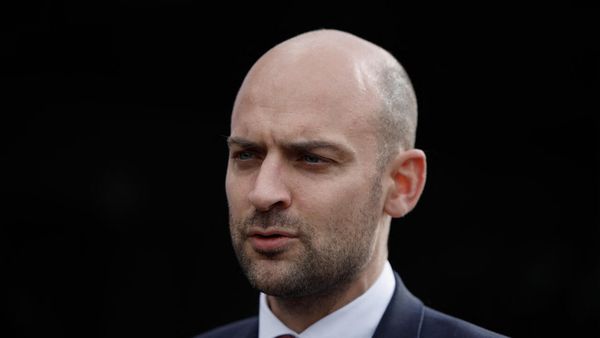From the very start, the case of 27-year-old Florence Maybrick and her unfortunate husband James was mired in controversy.
The couple, who lived in Aigburth, was well-known among Liverpool's social elites, attending all the most important balls and parties in the city. Behind closed doors, though, James, 23 years his wife's senior, was a hypochondriac, a regular user of arsenic and other poisons as a form of holistic medication. Both he and Florence were deeply unhappy in their marriage, and after eight years of violent arguments and affairs on both sides, they were finally ready to put an end to their relationship.
Before that could happen, however, James Maybrick became seriously ill after taking a double dose of one of his medicinal poisons - strychnine - on April 27, 1889. His condition deteriorated, and by May 11, he was dead.
READ MORE: Florence Maybrick was jailed for murdering her husband - but should she have been found guilty?
James's death might have occurred without fanfare, were it not for the suspicions raised by his brother, Michael, who demanded a post-mortem examination. Trace amounts of arsenic were found in his system, and while it was uncertain as to whether he had taken this himself or had been slipped it, rumours began to swirl about Florence.
It was said she poisoned her husband using fly-paper, obtained from a local chemists, soaked in water, which she gave to him. After evidence was given against her at the inquest, the young mother-of-two was arrested and formally charged with the murder of 50-year-old James.
She was brought to trial at St George's Hall in a whirlwind of publicity. When a guilty verdict was announced, and the judge sentenced her to death for the crime, members of the gallery leapt to their feet in outrage, crying that the young woman was innocent.
There was a massive public outcry, with many important politicians including the home secretary, the lord chancellor, and even the lord chief justice, Charles Arthur Russell, rallying in support of Florence. The case was covered extensively in newspapers both in Britain and in America, where Florence was born in the city of Mobile, Alabama.
James, after all, was a known user of arsenic, and had amassed a huge quantity of the poison over the years - enough to kill 50 people. What motive did Florence have to see her husband dead? The money left to her in his will was minimal, and she would have been financially better off with him alive and divorced from her.
The power of public opinion was not enough to see Florence's conviction overturned, but her death sentence was commuted to life in prison, and she served 10 years at the Woking District Female Convict Prison and four years at Aylesbury prison. After her release, she returned to America, where she made a modest living giving lectures on prison reform. In later years she moved to New Milford, Connecticut, where she lived as a recluse with only her cats for company until her death on October 23 1941.
So the story of Florence Maybrick came to an end, but for a certain set of dedicated historians - the 'Ripperologists' determined to find out the identity of Britain's most infamous serial killer, Jack the Ripper - the case of the convicted murderess is far from over.
In 1992, a diary was found, allegedly written by James Maybrick, in which he confessed to being the Ripper. The 9,000 word document (which was brought to light by Michael Barrett, a former Liverpool scrap metal dealer who claimed to have been given it by a friend at the pub) described the slaughter of the Ripper's innocent victims in gruesome detail. Was the diary a true account, a window into the mind of a depraved killer? Or was it merely a hoax?
Local researcher Christopher Jones's new book, The Maybrick Murder and the Diary of Jack the Ripper: The End Game, delves into the mystery.
He said: "It all started in 2007 when I did a talk about James Maybrick at the Liverpool Cricket Club, and it became quite apparent that in the world of Ripperologists they either believe 100% that James was Jack the Ripper, or 100% that he wasn't. So I didn't come down on either side.
"But I became more and more interested in the case, and in Florence as well. I went to America, to Alabama where she was born, and collected new information about both Florence and the Ripper case.
"After four or five years, I thought it was about time I put it on paper."
Christopher, a Liverpool University modern history and politics graduate who once worked as head of history in a Bootle secondary school, wrote his first book on the Maybrick case, The Maybrick A to Z, in 2008, and has contributed to several journals and books exploring the mystery of Jack the Ripper.
In his latest book, he bucks the trend of maintaining an open interpretation of the evidence - presenting two firm conclusions.
One: James Maybrick was completely innocent.
Two: Florence was, too.
"I'm 100% clear that Florence did not kill James," he said. "He was a serial user of both strychnine and arsenic, and the symptoms he exhibited leading up to his death suggested a strychnine overdose - not poisoning by arsenic.
"James took a concoction which was a very powerful strychnine solution, and he became very ill. The first thing Florence did was throw away the medicine and call for a doctor. If she had murder on the mind, she would have encouraged her husband to take even more of the 'medicine', but she did the opposite.
"Throughout his illness, at all times she showed great concern.
"The unfortunate thing for her was that, at the trial, the Judge (James Fitzjames Stephen) was a very strict moralist, and Florence had had a very brief affair. As a result, he thought that a woman who could commit, as he put it, a moral sin was capable of committing a criminal one.
"She was a victim of 19th century prejudice. There was a double standard - James' many affairs were brushed under the carpet, but Florence's one brief affair was blown out of all proportion."
But while James may have been an adulterer, he was no killer, according to Christopher and his co-author, Dr. Daniel Dolgin of Pensacola, Florida.
Christopher said: "The diary is a clever, but clear, forgery.
"In 1992 this diary was brought to light. Using some clues in the diary, the writer was identified by some as being James Maybrick - it names his home, Battlecrease House, and his children James and Gladys.
"The question is where was this diary until 1992? One of the stories is that it was found by electricians doing work in the house. However, on the day the diary was said to be discovered, they were in a completely different part of the house, and the floorboards that had been lifted had already been lifted years before."
Tests carried out on the ink in the diary proved inconclusive, but Christopher said testing of the paper itself suggested the ink had been applied fairly recently. Furthermore, the handwriting style appeared modern, far from Victorian.
"There isn't any credible evidence for the diary being real, but some people want to believe it," Christopher said.
"The Jack the Ripper case, for over 130 years, has intrigued people. Any night of the week you can go around Whitechapel and there will be people on guided tours of the murder sites. I think it's particularly because Jack the Ripper was never caught. There's a whole multitude of different theories and every time there's a new book there's a new theory.
"People have a great interest in true crime and because Jack was the first well-known serial killer it took over. It was a media frenzy that never really died down."
The Maybrick Murder and the Diary of Jack the Ripper: The End Game, in which Christopher documents his years of research in minute detail, will be published on September 11.
A book launch and conference will take place that day at the Reading Room on Wellington Street, Garston, from 10am until 4pm. Entry costs £10, with all proceeds going to local children's charities.
Christopher added: "We're very proud of what we have done with this book. We had tried to tell the story in a very thorough way and make a positive case. It has been four years in the making so we're delighted with the end product and we're pretty sure it will be well received."
READ NEXT
Nan 'stabbed to death trying to break up fight' behind pub
Plans for new private school at Knowsley community centre







